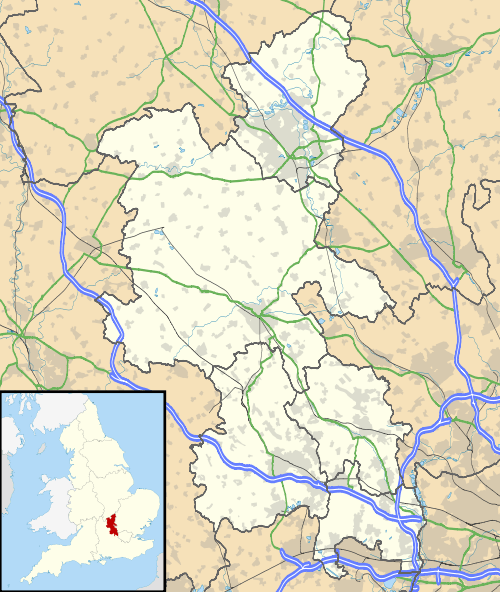Hazlemere
| Hazlemere | |
| Holy Trinity Church, Hazlemere |
|
 Hazlemere |
|
| Population | 9,350 [1] 9,623 (2011 Census)[2] |
|---|---|
| OS grid reference | SU891955 |
| District | Wycombe |
| Shire county | Buckinghamshire |
| Region | South East |
| Country | England |
| Sovereign state | United Kingdom |
| Post town | High Wycombe |
| Postcode district | HP15 |
| Dialling code | 01494 |
| Police | Thames Valley |
| Fire | Buckinghamshire |
| Ambulance | South Central |
| EU Parliament | South East England |
| UK Parliament | Wycombe |
|
|
Coordinates: 51°39′04″N 0°42′40″W / 51.651199°N 0.711237°W
Hazlemere is a village and civil parish within Wycombe district in Buckinghamshire, England. It is approximately 2½ miles to the northeast of High Wycombe on the A404 leading to Amersham and beyond.
Hazlemere was at one time a small hamlet in the ancient Desborough Hundred and the name is recorded as long ago as the 13th century. The crossroads at the centre of the village was originally the meeting point of three different parishes, Penn, Hughenden, and Chepping Wycombe. However, in 1987, due to the large increase in population, Hazlemere became a parish in its own right. Since then, Hazlemere Parish Council can be credited with many achievements. Its headquarters at Cedar Barn have been transformed into a village hall and outbuildings used by various local groups, and play areas for children and sports facilities have been provided on the Recreation Ground and in Rose Avenue.
At the beginning of the 20th Century farming was still the main industry and in Edwardian times a large proportion of the area was devoted to cherry orchards. Brickmaking was carried out at the Old Kiln and at Oakengrove. The First World war depleted Hazlemere of its young men, but in 1919 those returning formed the Workers Social League to improve the neglected village. It was very successful, but by the 1930's the area was losing its rural character and indiscriminate building was increasing, stopped only by the outbreak of the Second World War, in which Hazlemere more than played its part. A prisoner-of-war camp was constructed in the grounds of Hazlemere Park and the Church of England school had a Beat the U-boat campaign. The village had its own Home Guard platoon and contributed in no small measure to the Spitfire and other funds. After the war, the camp was used as temporary accommodation for up to 94 homeless families who had been victims of the Nazi and Russian invasions of Poland in 1941. The camp was eventually closed in 1955/56.
Hazlemere was faced with many problems after the war ended, not least the pressure to build more houses. The largely uncontrolled development exacerbated the already complex local government boundaries and in 1952 a Residents' Association was formed to tackle this and other problems. The 1960's and 1970's saw a relentless increase in housing. Huge developments took place on the Park, and Brackley, Hill and Manor Farms. No provision was made for leisure and it was through the efforts of the Residents' and the Community Associations that Hazlemere eventually got its own library and Community Centre in 1976.
In 1969 came another development proposal known as H7, involving thousands of houses served by a new road to be built from Inkerman Hill to the east of Hazlemere, across green belt farmland to the north of the village, through to Hughenden. This was met with huge resistance for many years and was only finally abandoned following pressure from The Grange Action Group, formed in 1998. In 2012 the majority of the old H7 land known as Widmer Fields was finally purchased by the Grange Area Trust with the help of an interest-free loan.
Schools in the village consist of Hazlemere Combined Church of England School next to the church, first opened in 1847, Cedar Park Combined School to the north and Manor Farm Community Junior School and Sir Willam Ramsay secondary school on Rose Avenue to the south.
Notable residents include Sir William Ramsay, the Nobel prize-winning chemist, who lived in Hazlemere until his death in 1916, Robert Leadbetter, who opened a private zoo at his home Hazlemere Park, and Sir Geoffrey de Havilland, the famous aviator and aircraft designer, whose father had been the curate at Holy Trinity church.
Hazlemere is home to Wycombe Tigers Youth FC, who play at Hazlemere Rec.
References
- ↑ Neighbourhood Statistics 2001 Census
- ↑ "Civil Parish population 2011". Neighbourhood Statistics. Office for National Statistics. Retrieved 30 October 2016.
External links
- Hazlemere Parish Council
- Royal British Legion Hazlemere & District Branch
- Hazlemere Church of England School
- Manor Farm Community Junior School
- Cedar Park School
- Sir William Ramsay School
- 871 (Penn) Squadron Air Training Corps - Based in Hazlemere
- Hazlemere Tennis Club
- Hazlemere church
![]() Media related to Hazlemere at Wikimedia Commons
Media related to Hazlemere at Wikimedia Commons
